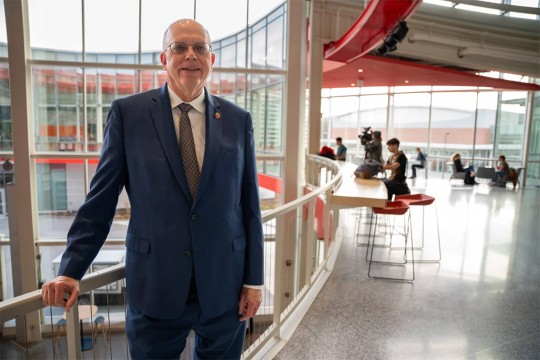Penfield Resident Named Chair of RIT Criminal Justice Department
Castellano comes to RIT after nearly 20 years at Southern Illinois University in Carbondale and brings with him a passion for social justice issues and research that evaluates and assesses “the impact of crime-control policies on people’s lives.”
In an article in the November issue of Criminology, Castellano and his co-authors evaluate the impact of super-maximum security prisons on prison violence. The use of “super max” prisons, a trend dating to the early 1980s, locks up the “worst of the worst” in closed, sensory-depriving situations, giving guards total control of inmates without human contact.
“This is a return to practices in place in the 1830s,” Castellano says. “The premise is that these inmates are so dangerous that if you take them out of other prisons, you reduce security needs and can do more programs.”
The study looked at the only three states with super max prisons that kept substantive long-term data on prison violence—Arizona, Illinois and Minnesota. Only Illinois claimed a reduction of inmate-on-staff violence.
Castellano is taking a closer look at the Illinois data in a related study. The goal is to determine whether the reduced inmate-on-staff violence resulted from the super max prison that opened in 1998 or a crackdown in the Illinois prison system in the mid 1990s following a series of scandals regarding the prevalence of gangs, drugs and contraband in prison.
“Given how depriving and cruel super max prisons are, is the cost to human life worth the small, modest impact found in this one state when there are better methods of control in prison environments?” Castellano asks. “The burden is on the government to show that these methods work and they haven’t proven it.”
In another ongoing study, Castellano questions the ethics of privatizing prisons and treating inmates and staff as commodities.
“If you provide a profit motive, won’t it corrupt the prison system?” he asks. “If profit is the goal, the motive, won’t that result in cutbacks in programs?”
Castellano notes that more than 2 million people are in prisons and jails in this country, an incarceration rate six times higher than 30 years ago.
According to him, the skyrocketing rate of incarceration is directly linked to the war on drugs, a willingness to imprison drug and property offenders to a greater degree than in other nations, and a willingness to wage war against poor blacks.
He also attributes the packed prison systems to a lack of political leadership, the influence of the conservative movement in the United States and politicians’ ability to promote fear through the media.
“We have this machine—the criminal justice prison industrial complex—that generates value to a certain segment of the population,” he says. “The machine won’t go away unless there’s a sea change in how we think of crime and punishment.”
A former member of the Southern Illinois Restorative Justice Action Committee, Castellano is a proponent of a movement that looks at crime differently. Restorative justice—as opposed to the retributive system currently in place—involves the community in determining the harm done by a crime, the source of the harm and how to repair it.
“Crime is best addressed at the community level with government supporting and guiding local citizens in their attempts to promote safe, secure communities, through community policing, drug courts and community corrections.”
Castellano would like to encourage a focus on community justice in RIT’s criminal justice curriculum. He sees the promise in working with community members as a form of community development and enrichment.
“And that’s a lot different than riding around in a patrol car and arresting kids on the street.”
Internationally recognized as a leader in computing, imaging, technology, fine and applied arts, and education of the deaf, Rochester Institute of Technology enrolls 15,500 students in more than 340 undergraduate and graduate programs. Its cooperative education program is one of the oldest and largest in the nation.
For the past decade, U.S. News and World Report has ranked RIT as one of the nation’s leading comprehensive universities. RIT is also included in Fisk’s Guide to America’s Best Colleges, as well as Barron’s Best Buys in Education.














